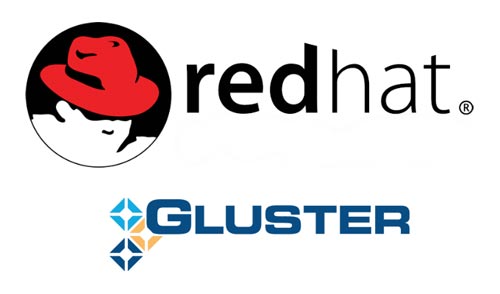
Red Hat Throws Cap into Big Data Storage Arena
This week Red Hat released a scale-out storage product designed to contend with unstructured data, marking another move outside of what one might consider their main bread and butter, although then again, Red Hat has never settled for merely pitching their open source mainstay.
 By leveraging their Gluster storage buy in October and using Linux to back the solid technology, the Red Hat Storage Appliance could bring the company even further into the fold of many enterprise shops. This appliance, which is built on GlusterFS 3.2 and Red Hat Enterprise Linux 6.1 “enables enterprises to treat physical storage as a virtualized, standardized and scale-on-demand pool while continuing to provide the flexibility, performance and quality required for open source enterprise environments across physical and cloud deployments.”
By leveraging their Gluster storage buy in October and using Linux to back the solid technology, the Red Hat Storage Appliance could bring the company even further into the fold of many enterprise shops. This appliance, which is built on GlusterFS 3.2 and Red Hat Enterprise Linux 6.1 “enables enterprises to treat physical storage as a virtualized, standardized and scale-on-demand pool while continuing to provide the flexibility, performance and quality required for open source enterprise environments across physical and cloud deployments.”
Red Hat says that the emphasis on open source and cost-effectiveness make them a prime option for IT shops with a mixed bag of data demands, both in terms of their workloads and the types of environments they’re running across. A spokesperson for Red Hat pointed to the suitability for this appliance for digital media and content delivery networks, near-line storage, file sharing, backup and archival environments.
At the time of the acquisition, Red Hat talked about their Gluster acquisition as central to their overall cloud and virtualization strategy. While it’s definitely a component in this week’s release, the big data angle is the central element, at least in terms of how the company is positioning the new appliance. In October, Red Hat stated that in terms of big data, Gluster’s play to provide highly scalable storage for unstructured data while still maintaining the interoperability benefits of NAS made it attractive.
Red Hat claimed back in October that Gluster was a target because “it is a pure software solution, able to run on commodity storage hardware.” They said that this was the key differentiator since other potential targets for acquisition required purchase of specialized vendor-specific hardware.

For now, many are probably looking to the same offering with the additional I/O boost that comes with the updates in RHEL 6.2. The emphasis of this update was actually targeted at big data demands, with increased performance for enterprise I/O and storage performance. It is also an update that includes parallel NFS, which could provide the scalability that many environments require. According to Red Hat, the release of 6.2 (much quieter than most of their others) boosts I/O sppeds up to 30 percent with the addition of a few new protocols, including XPS.
As one commentator noted today, one of the reasons why Red Hat will be the first billion dollar open source company is that they’ve looked far beyond mere Linux to see what’s possible with the open source platform in the cloud, on the desktop and now as the basis of a storage software appliance.
Related Stories
SC11 Video Feature: Garth Gibson on RAID, Roots and Reliability
RAID on Enterprise Big Data
Scale-Out NAS Powering Genomics Business






























